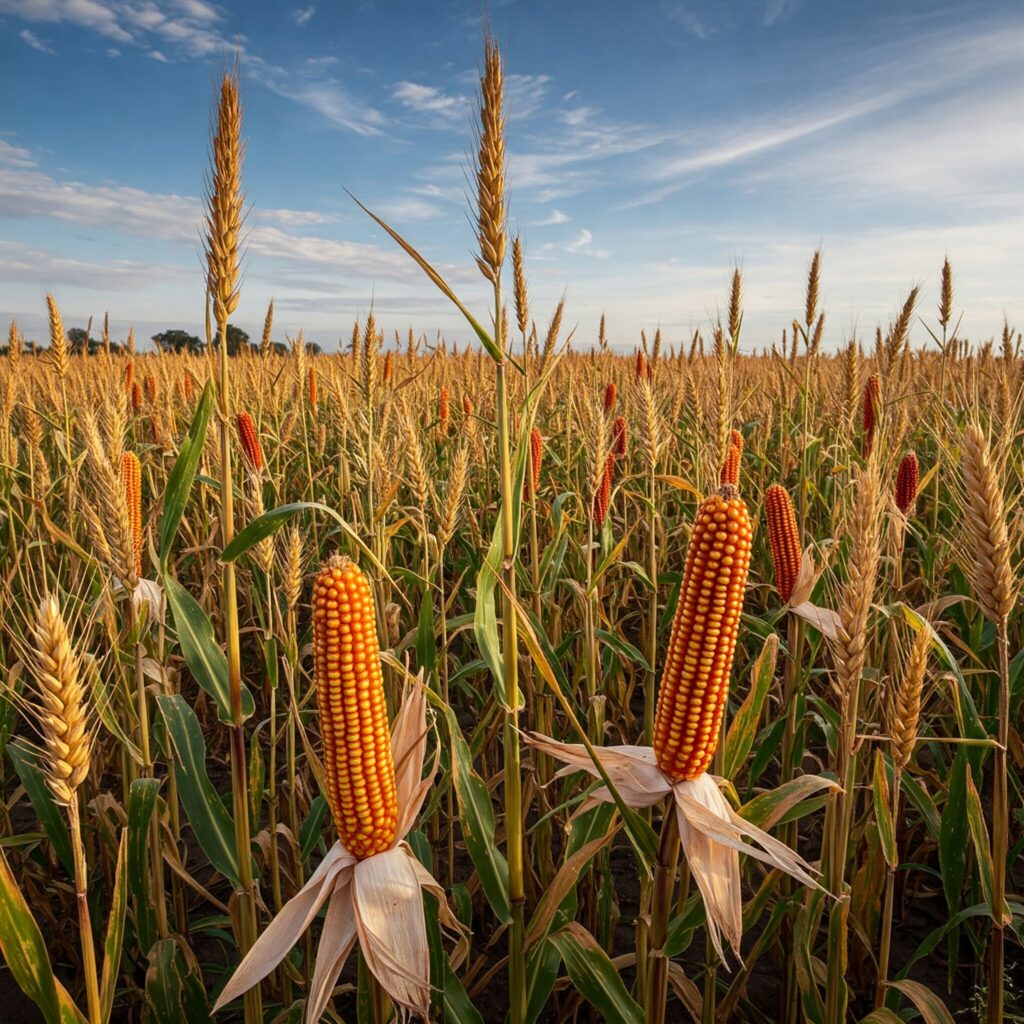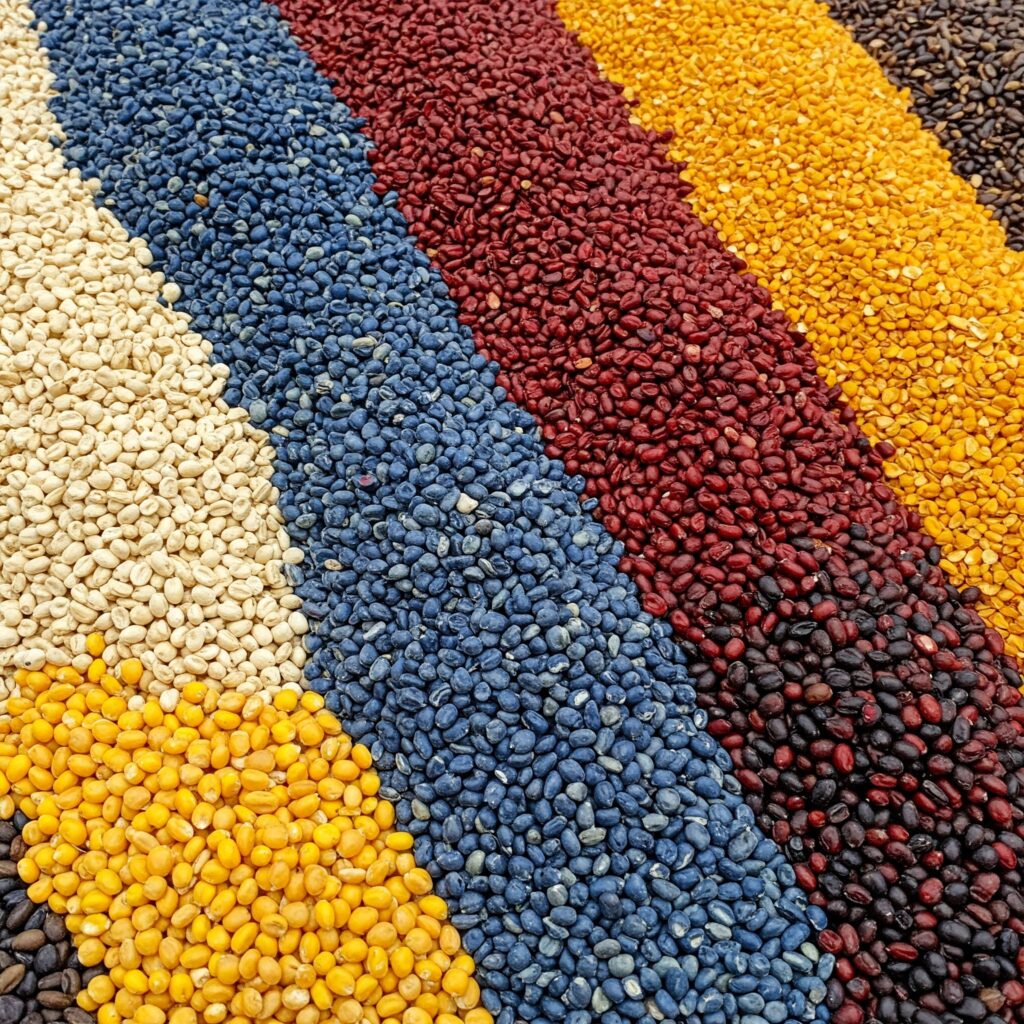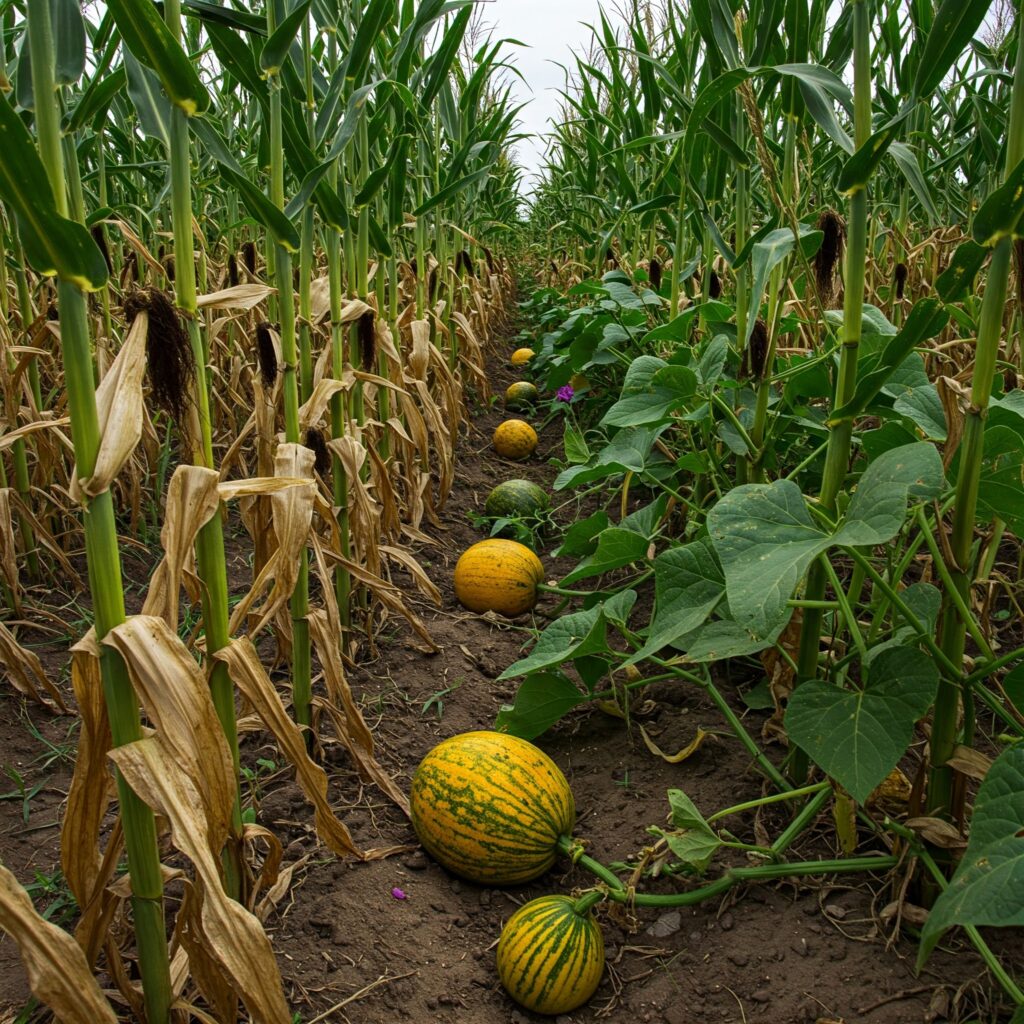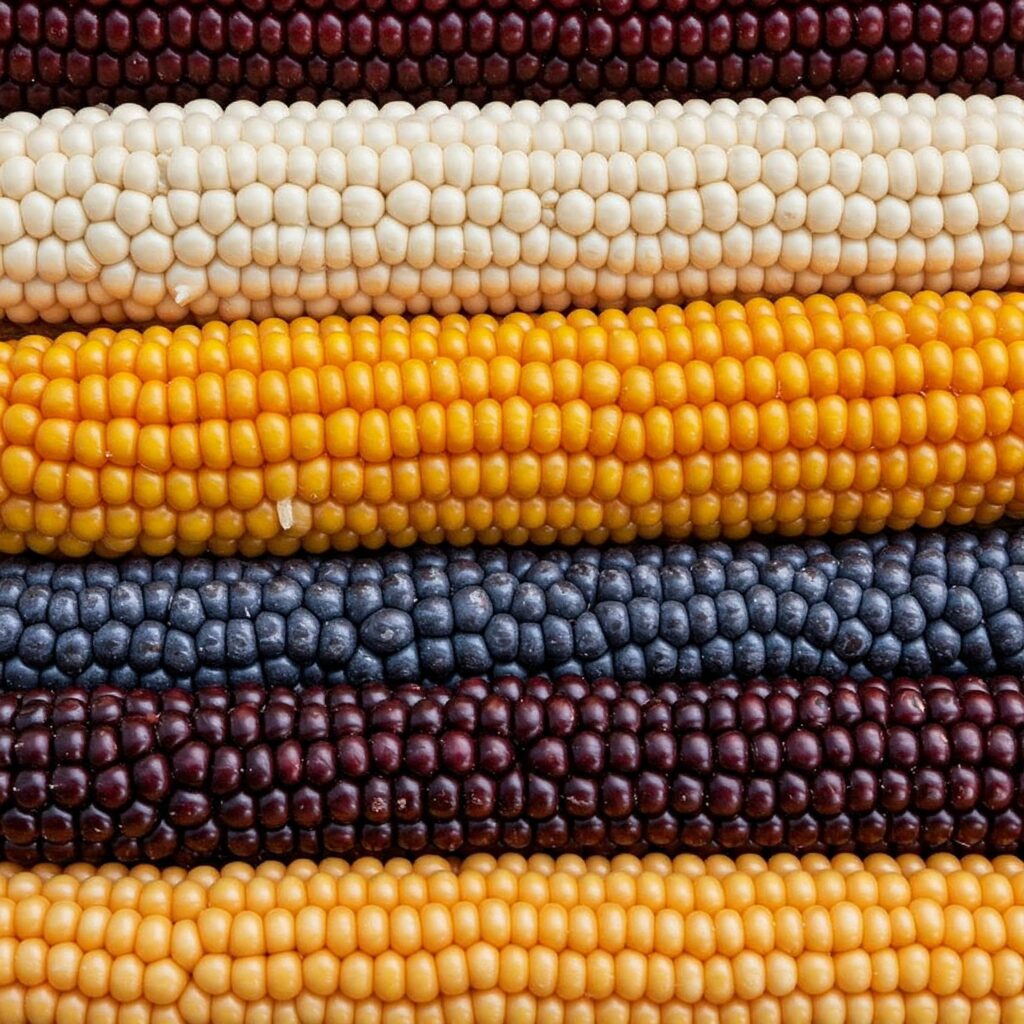The Fascinating Genetic Diversity of Native Mexican Corn
The astonishing diversity of native corn in Mexico lies in its vast genetic reserve, shaped over millennia by the interaction between indigenous communities and the country’s diverse agroecosystems. Each of the more than 60 native races represents a unique adaptation to specific conditions of altitude, temperature, humidity, soil type, and traditional cultivation practices. This genetic richness is not only crucial for food security and agricultural resilience but also holds invaluable potential for the genetic improvement of corn globally, offering genes for resistance to pests and diseases, drought tolerance, and adaptation to different environmental conditions.

Genetic research has revealed the intricate evolutionary history of corn in Mexico, showing how different native races have diverged and hybridized over time, creating a complex genetic mosaic. Phylogenetic studies, based on molecular markers, have made it possible to group native races into racial complexes that share a common origin and similar adaptations. This understanding of genetic diversity is fundamental to designing effective conservation strategies and to identifying genes of interest for crop improvement.
Beyond the Colors: Exploring the Unique Characteristics of Other Native Races
While blue, white, yellow, and red corn are emblematic, the diversity of native Mexican corn encompasses many other races with distinctive characteristics and traditional uses:
- Popcorn Maize (Maíz Palomero): Characterized by its small, hard grain, ideal for popcorn production. There are various local varieties of popcorn maize with particular colors and grain shapes.
- Sweet Corn (Elotero): Although the “Maíz Elotero” mentioned above refers to yellow corn for ears (elotes), there are native sweet corn races with tender and sugary grains, consumed at early stages of maturity.
- Floury Maize (Maíz Blando/Harinoso): With soft and floury grains, these races are especially valued for making fine flours used in tamales, atoles, and other traditional products. Examples include Maíz Chalqueño and Maíz Cacahuacintle.
- Olotón Maize: Adapted to the high altitudes of the Sierra Norte de Oaxaca, this race stands out for its ability to produce aerial roots that allow it to absorb moisture and nutrients from the air, a unique adaptation to its environment.
- Tuxpeño Maize: Widely distributed in the humid tropical zones of Mexico, this racial complex includes varieties with good adaptation to high temperature and humidity conditions.
- Zapalote Chico and Zapalote Grande Maize: Originating from the Isthmus of Tehuantepec region, these races are known for their tolerance to strong winds and saline conditions.

Each of these races, and many others, possesses unique characteristics in terms of plant morphology, grain color and texture, life cycle, adaptation to specific environmental conditions, and nutritional and culinary properties.
The Milpa System: An Ancestral Model of Biodiverse Agriculture
The milpa system, a traditional Mesoamerican agricultural practice, represents a paradigmatic example of sustainable and biodiverse agriculture. In the milpa, corn is cultivated in association with other crops such as beans, squash, chili peppers, and various edible and medicinal herbs. This polyculture not only increases the diversity of production and food security at the local level but also promotes beneficial ecological interactions:
- Nitrogen Fixation: Beans, a legume, fix atmospheric nitrogen in the soil, benefiting corn and other crops.
- Weed Control: The ground cover provided by squash and other plants helps to suppress weed growth.
- Reduction of Pests and Diseases: The diversity of crops makes it difficult for pests and diseases specific to each species to proliferate.
- Efficient Use of Resources: The different plants in the milpa use resources (light, water, nutrients) in a complementary way, optimizing their use.
The milpa is not only an agricultural production system but also a space for the transmission of traditional knowledge, the conservation of native seeds, and the strengthening of the cultural identity of indigenous communities.

Native Corn in Mexican Cuisine: A Universe of Flavors and Textures
The diversity of native corn is vibrantly reflected in Mexican gastronomy. Each race contributes unique flavors, textures, and properties to a wide range of traditional dishes:
- Blue Corn (Maíz Azul): Its pigmented grains result in tortillas with a slightly sweet flavor and a soft texture, ideal for tacos, enchiladas, and totopos. It is also used in the preparation of atoles and pinoles.
- White Corn (Maíz Blanco): The basis of the daily tortilla in many regions, white corn offers a firmer texture and a neutral flavor that complements a wide variety of fillings and stews. It is also essential for making tamales and pozole.
- Yellow Corn (Maíz Amarillo): With its more pronounced flavor, yellow corn is the star of elotes (tender ears of corn, boiled or grilled) and esquites (corn kernels sautéed with epazote, chili, and other seasonings).
- Red Corn (Maíz Rojo): Often with earthy and slightly sweet notes, red corn is used in the preparation of regional dishes such as tesgüino (a fermented drink) and various types of tamales and tlacoyos.
- Popcorn Maize (Maíz Palomero): The different native varieties of popcorn maize produce popcorn with subtly different flavors and textures.
- Floury Maize (Maíz Blando/Harinoso): The flours made from these races are fundamental for preparing soft and spongy tamales, creamy atoles, and gorditas with particular textures.
The use of native corn in cooking not only enriches the flavor and diversity of dishes but also supports the economy of rural communities and the conservation of this invaluable biocultural heritage.

Urgent Challenges and Conservation Strategies for Native Corn
Despite its cultural, ecological, and economic importance, native corn varieties in Mexico face several challenges:
- Genetic Erosion: The introduction and predominance of commercial and hybrid varieties, selected for high yields under intensive monoculture systems, have led to the loss of genetic diversity in many regions.
- Transgenic Contamination: The planting of transgenic corn represents a threat to the genetic integrity of native races through gene flow (cross-pollination).
- Climate Change: Alterations in temperature and precipitation patterns pose a challenge to the adaptation of native races, which have evolved under specific climatic conditions.
- Changes in Agricultural Practices: The adoption of monoculture systems and the loss of traditional agricultural knowledge threaten the continuity of the milpa system and the conservation of native seeds.
Faced with these challenges, various conservation initiatives are underway:
- Community Germplasm Banks: Indigenous and rural communities are establishing local seed banks to conserve and multiply their native varieties.
- Seed Guardian Networks: Farmers and organizations are networking to exchange seeds, knowledge, and experiences on the management and conservation of native corn.
- Participatory Research and Breeding: Scientists and farmers collaborate in the research and improvement of native varieties, seeking to highlight their agronomic, nutritional, and cultural qualities.
- Promotion of Consumption: Gastronomic and market initiatives seek to promote the consumption of native corn, creating demand and value for producers.
- Legislation and Public Policies: Legal frameworks and public policies are being sought to protect the genetic heritage of native corn and support the farmers who cultivate it.
Conclusion: A Call to Value and Protect the Treasure of Native Corn
The native corn of Mexico is much more than a simple grain; it is a living testament to the country’s rich biocultural history, a pillar of food security, and a universe of flavors in gastronomy. Its conservation is not only a responsibility of indigenous communities and traditional farmers but a commitment of all Mexican society and the international community. Valuing, knowing, and supporting the cultivation and consumption of native corn is essential to protect this invaluable heritage for present and future generations.
References:
- Brush, S. B. (2004). Farmers’ bounty: Locating crop diversity in local knowledge for a global future. Johns Hopkins University Press.
- Kato Y., T. A., Sánchez G., J. J., Aguilar V., J., Hernández C., M. M., & López S., P. (2009). Origen y diversificación del maíz: una revisión analítica. Universidad Nacional Autónoma de México.
- [Include other references to genetic, anthropological, and agronomic studies on native Mexican corn].
- [Cite relevant conservation initiatives and organizations].
Keywords: Native corn Mexico, Mexican corn races, corn genetic diversity, traditional agriculture Mexico, milpa system, Mexican corn gastronomy, native corn conservation, germplasm banks, biocultural heritage, food security Mexico.
 AgronoBlog – Agriculture Blog
AgronoBlog – Agriculture Blog 


